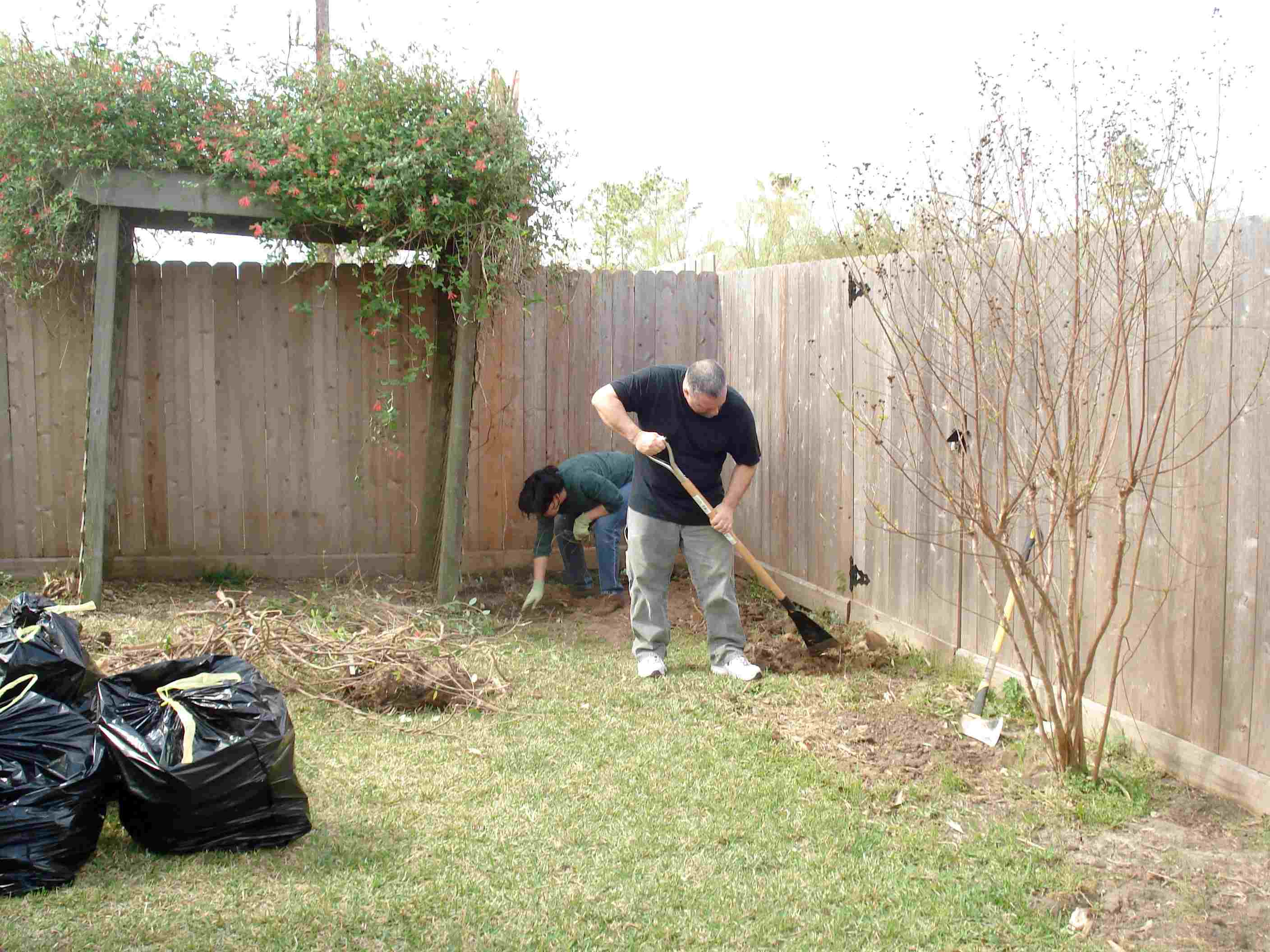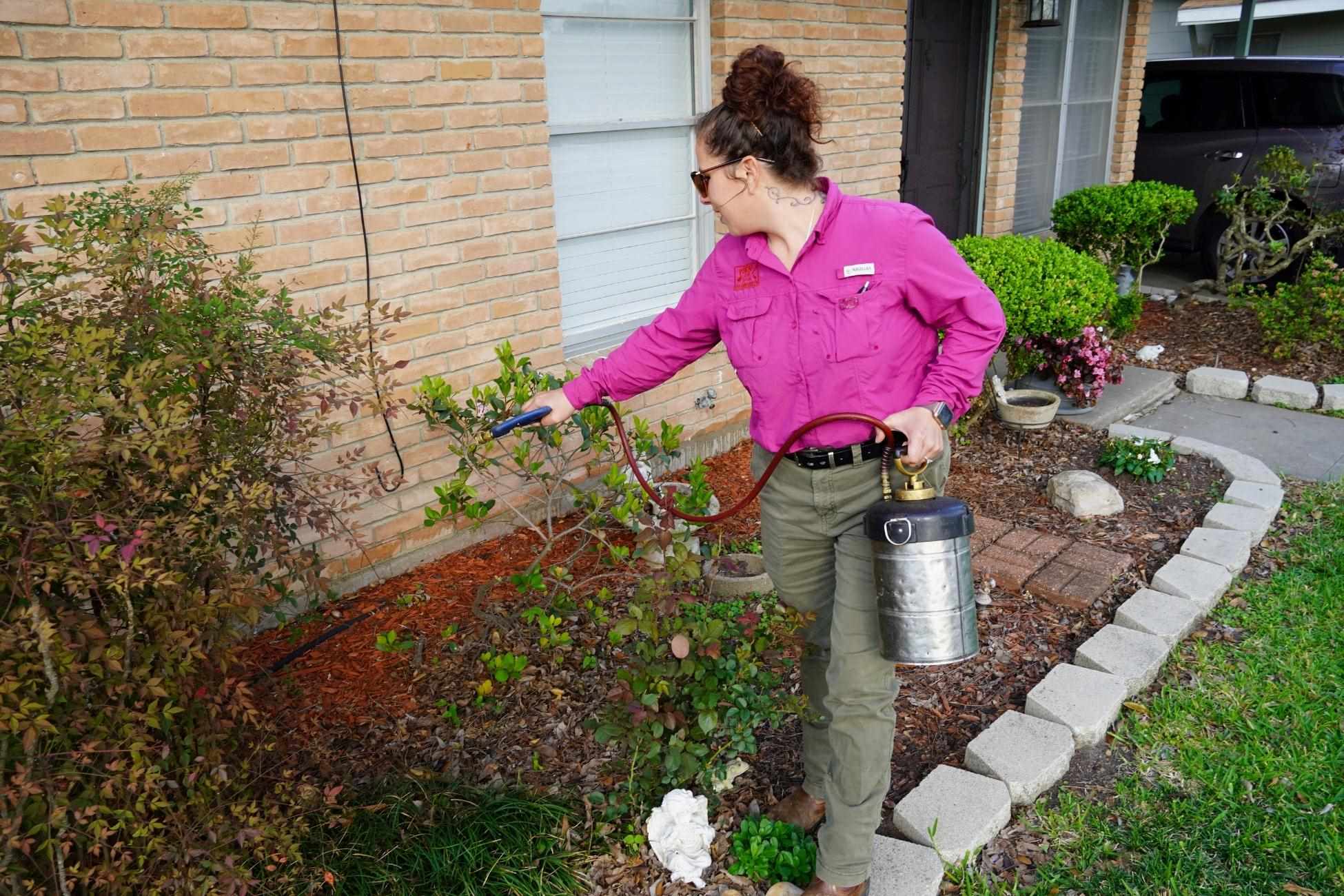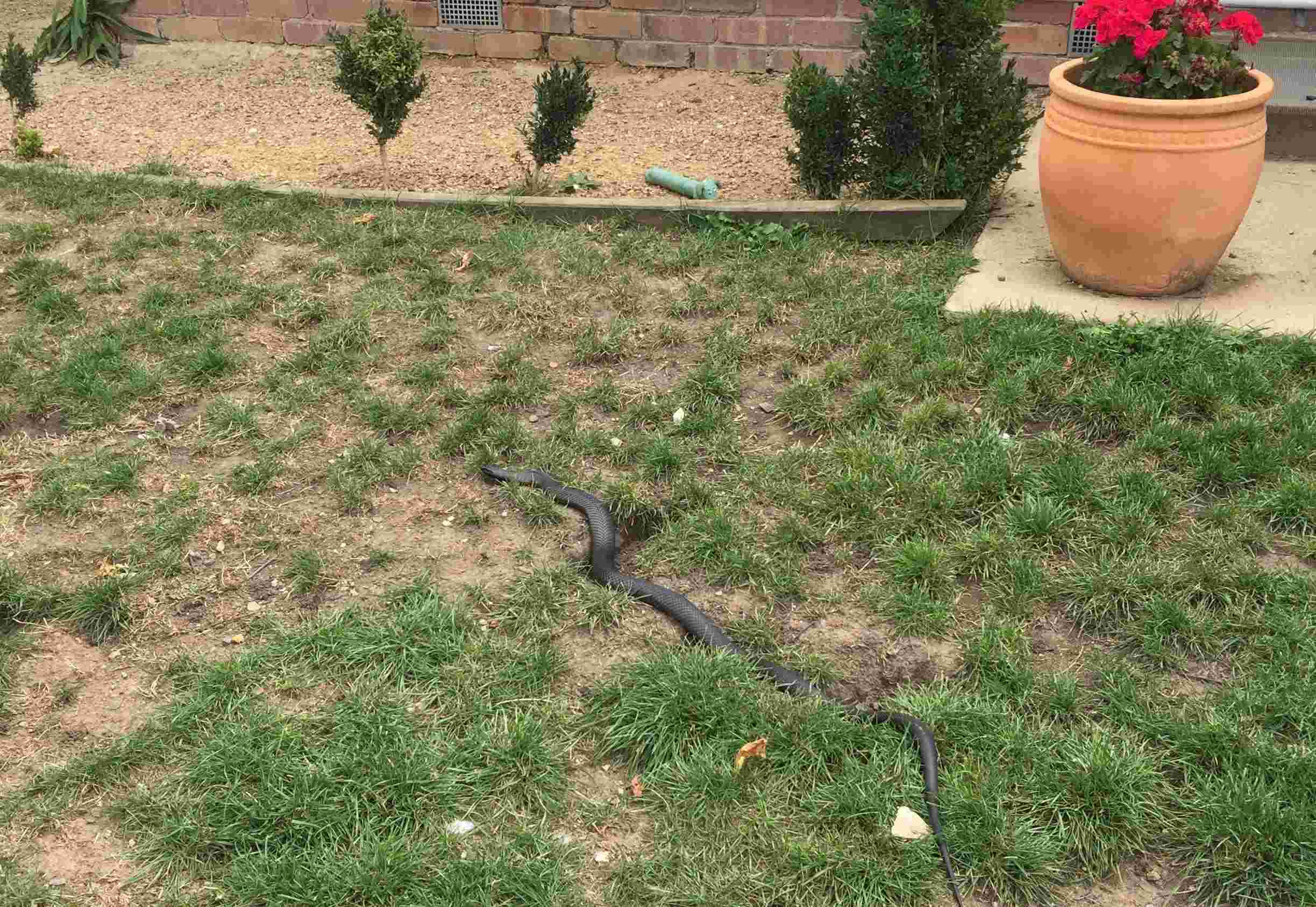Home>Gardening Techniques>DIY Projects>How To Get Wifi In Backyard


DIY Projects
How To Get Wifi In Backyard
Modified: January 22, 2024
Discover how to enhance your backyard WiFi with these simple and affordable DIY projects. Stay connected and enjoy seamless internet outdoors.
(Many of the links in this article redirect to a specific reviewed product. Your purchase of these products through affiliate links helps to generate commission for Chicagolandgardening.com, at no extra cost. Learn more)
Table of Contents
Introduction
Welcome to the world of DIY projects! If you’re someone who loves spending time in your backyard, whether it’s for gardening, entertaining guests, or simply enjoying the outdoors, you might find it frustrating when your Wi-Fi signal weakens or completely vanishes. But fear not! In this article, we will explore various DIY methods to help you get a strong and reliable Wi-Fi signal in your backyard.
In today’s digital age, having a strong Wi-Fi connection is essential for many activities, such as streaming music, watching movies, browsing the internet, or even working from home. However, traditional Wi-Fi routers often have limited range, leaving you with a weak or nonexistent signal once you venture further away from the house.
Fortunately, there are several solutions to extend your Wi-Fi range and bring reliable internet to your backyard. From simple DIY techniques to advanced setups, we will explore them all and help you find the best solution for your needs.
Before diving into the various methods, it’s important to assess the current Wi-Fi signal strength in your backyard. This will give you a better understanding of the problem and help you choose the most suitable solution.
Now, let’s get started on turning your backyard into a Wi-Fi oasis!
Assessing the Wi-Fi Signal Strength
Before you begin implementing any DIY solution, it’s crucial to assess the existing Wi-Fi signal strength in your backyard. This will give you a clear understanding of the challenges you’re facing and help you determine the most effective approach to improving your Wi-Fi range.
Start by going outside to your backyard with a device, such as a smartphone or laptop, that can connect to your Wi-Fi network. Walk around different areas of your backyard and take note of the signal strength displayed on your device. You can typically find this information in the Wi-Fi settings or through third-party apps.
As you move further away from your house, you may notice the signal strength dropping significantly or even disappearing entirely. This indicates that your Wi-Fi router’s range is not reaching your backyard effectively.
In addition to signal strength, pay attention to other factors that can impact your Wi-Fi coverage, such as obstructions or interference. Large obstacles like walls, trees, or buildings between your router and backyard can weaken the signal. Similarly, electronic devices like cordless phones, microwaves, or baby monitors can interfere with the Wi-Fi signal as well.
Make note of any weak spots or areas with no signal in your backyard. This information will be helpful when deciding on the best DIY solution to enhance your Wi-Fi range.
It’s also worth noting that different devices may have varying Wi-Fi receiver capabilities. While your smartphone may show a weaker signal in certain areas, a dedicated Wi-Fi range extender or access point could still provide a stronger connection to your devices in those same spots.
By assessing the Wi-Fi signal strength in your backyard, you will gain valuable insights into the obstacles you need to overcome. Armed with this knowledge, you can now explore various DIY options to boost your Wi-Fi range and ensure a strong, reliable internet connection in every corner of your backyard.
Extending the Wi-Fi Range in Your Backyard
If you’ve determined that your Wi-Fi signal doesn’t reach your backyard effectively, there are several methods you can try to extend the range and improve the coverage. Let’s explore some popular DIY approaches:
1. Placement of your Wi-Fi Router: Start by optimizing the placement of your Wi-Fi router. Position it in a central location as close to the backyard as possible. Avoid placing it near thick walls or obstructions that could block the signal. Ensure that the router is elevated, placing it on a higher shelf or mounting it on the wall. This can help maximize the signal coverage.
2. Adjust the Router Antennas: Most Wi-Fi routers have adjustable antennas. Experiment with different positions and angles to find the optimal configuration that boosts the signal in your backyard. Rotating them vertically or horizontally can sometimes make a noticeable difference.
3. Upgrade to a More Powerful Router: If your current router is old or low in power, consider upgrading to a more powerful one. Look for routers with higher transmission power and multiple antennas to ensure wider coverage and better signal strength.
4. Use Wi-Fi Extenders or Boosters: Wi-Fi extenders or boosters are devices that capture and amplify your existing Wi-Fi signal, extending its coverage to reach areas with weak or no signal. They are easy to set up and can significantly improve the Wi-Fi range in your backyard. Simply plug them into an electrical outlet and follow the manufacturer’s instructions to configure them.
5. Create a Wireless Access Point in the Backyard: Another option is to set up a wireless access point (WAP) in your backyard. This involves running an Ethernet cable from your router to a location in your backyard and connecting it to a second Wi-Fi router or access point. This will create a new Wi-Fi network specifically for your backyard, extending the range and providing a dedicated connection to that area.
Remember, it’s important to secure your Wi-Fi network to prevent unauthorized access, especially if you’re creating a separate network for your backyard. Use strong passwords and encryption protocols to protect your network and personal information.
By exploring these DIY methods, you can significantly extend the Wi-Fi range to cover your backyard more effectively. Experiment with different approaches to find the solution that best suits your needs and enjoy a strong and reliable internet connection throughout your outdoor space.
Using Wi-Fi Extenders or Boosters
If you are experiencing weak or no Wi-Fi signal in your backyard, using Wi-Fi extenders or boosters can be an effective solution to improve the coverage. Wi-Fi extenders, also known as range extenders or repeaters, capture the existing Wi-Fi signal from your router and amplify it, extending its range to reach areas that were previously out of range.
Wi-Fi extenders come in various forms and models, but most of them are designed to be plug-and-play devices, making them easy to set up and use. Here’s how you can use Wi-Fi extenders or boosters to enhance the Wi-Fi range in your backyard:
- Choose the right Wi-Fi extender: Look for a Wi-Fi extender that suits your needs and is compatible with your router. Some Wi-Fi extenders have a single band, while others operate on dual bands for better performance. Consider factors such as the range, signal strength, and the number of devices it can support.
- Find the optimal location: Plug in the Wi-Fi extender in an electrical outlet that is strategically located between your router and the backyard. This helps ensure a strong signal is transmitted to the outdoor area. Avoid placing the extender too far from the router, as it may result in a weakened signal.
- Connect the extender to your Wi-Fi network: Most Wi-Fi extenders can be easily configured through a web interface or a mobile app. Follow the provided instructions to connect the extender to your existing Wi-Fi network. This typically involves entering the network name (SSID) and password.
- Test the Wi-Fi signal in your backyard: After setting up the extender, use a Wi-Fi enabled device to test the signal strength in your backyard. Walk around different areas of the outdoor space and check if the signal has improved. You should now experience a stronger and more reliable Wi-Fi connection in your backyard.
- Consider multiple extenders for large areas: If you have a large backyard or multiple outdoor spaces, a single extender may not cover the entire area effectively. In such cases, you can set up multiple Wi-Fi extenders strategically placed to overlap their coverage. This creates a mesh-like network, ensuring a strong and seamless Wi-Fi connection throughout your entire outdoor space.
Remember, Wi-Fi extenders work by amplifying the existing Wi-Fi signal, so the quality of the extended signal will depend on the initial signal strength from your router. If your router’s signal is already weak, the extender may not provide a significant improvement. In such cases, consider upgrading your router or exploring other solutions like creating a wireless access point.
By using Wi-Fi extenders or boosters, you can extend the Wi-Fi range in your backyard without the need for complex installations or expensive equipment. Enjoy a strong and reliable Wi-Fi connection as you browse the internet, stream videos, or communicate with friends and family while you relax in your outdoor oasis.
Creating a Wireless Access Point in the Backyard
If you want to have a dedicated Wi-Fi network in your backyard, creating a wireless access point (WAP) is a great option. A WAP allows you to extend your existing Wi-Fi network to cover your outdoor space more effectively, providing a reliable connection for your devices in the backyard.
Here’s a step-by-step guide on how to create a wireless access point in your backyard:
- Find a suitable location: Choose a location in your backyard where you want to set up the access point. Ideally, it should have a clear line of sight to your main router inside the house. Avoid placing it too close to the ground or in areas where it could be exposed to harsh weather conditions.
- Set up a second router or access point: Get a second Wi-Fi router or access point that supports the Bridge/AP mode. This mode allows the device to connect to your existing Wi-Fi network as a client, and then broadcast a new Wi-Fi network in the backyard. Connect the new router to a power source and use an Ethernet cable to connect it to your main router.
- Configure the access point: Access the router’s settings through a web browser on a connected device. Set the router’s SSID (network name) and password to create a unique Wi-Fi network for your backyard. Ideally, the network name and password should be different from your main Wi-Fi network to avoid confusion.
- Enable DHCP: While configuring the access point, ensure that the DHCP (Dynamic Host Configuration Protocol) is enabled. This allows the access point to assign IP addresses automatically to devices that connect to the network.
- Place the access point in the backyard: Once the access point is configured, position it in the previously chosen location in your backyard. Mount it on a wall or place it on a high surface to maximize the signal coverage. Ensure it is protected from rain or direct sunlight if not weatherproof.
- Connect devices to the backyard network: On your devices, search for available Wi-Fi networks and connect to the network created by the access point. Use the SSID (network name) and password set during the configuration process. You should now be able to enjoy a strong and reliable Wi-Fi connection in your backyard.
Creating a wireless access point is an excellent solution if you want a dedicated Wi-Fi network specifically for your backyard. It provides a more reliable and robust connection compared to Wi-Fi extenders or boosters. Additionally, it allows you to customize network settings and access controls for your backyard network separately.
Remember to secure your backyard network with a strong password and encryption to prevent unauthorized access. Additionally, periodically check for firmware updates for both your main router and the access point to ensure optimal performance and security.
By following these steps, you can easily create a wireless access point in your backyard and enjoy a dedicated Wi-Fi network with solid coverage. Whether you’re working, streaming, or simply relaxing outdoors, you’ll have a reliable internet connection at your fingertips.
Setting Up a Mesh Wi-Fi Network
If you’re looking for a comprehensive and efficient solution to extend your Wi-Fi range in your backyard, setting up a mesh Wi-Fi network is worth considering. A mesh network consists of multiple access points, called nodes, that work together to provide seamless coverage throughout your entire property, including your backyard.
Here’s a step-by-step guide to help you set up a mesh Wi-Fi network:
- Research and choose a mesh Wi-Fi system: There are several mesh Wi-Fi systems available on the market, such as Google Nest Wifi, Eero, or Netgear Orbi. Consider factors such as coverage range, number of nodes, and ease of setup while selecting the system that best fits your needs.
- Connect the primary node: Start by connecting the primary node to your existing modem or router using an Ethernet cable. Power on the node and follow the manufacturer’s instructions to complete the setup process. This usually involves downloading a companion mobile app to configure the network.
- Place additional nodes strategically: Place the additional nodes in your backyard and other areas of your property where you want to extend the Wi-Fi coverage. Ideally, the nodes should be positioned within range of each other and the primary node to ensure a strong and seamless connection.
- Connect the additional nodes: With the nodes powered on, use the mobile app or the system’s web interface to add them to the network. The nodes will automatically connect to the primary node, creating a mesh network with a unified Wi-Fi network name (SSID) and password.
- Configure advanced settings: Many mesh Wi-Fi systems offer advanced features, such as parental controls, guest network options, or device prioritization. Take advantage of these settings to customize and optimize your network according to your preferences.
- Test the Wi-Fi signal in your backyard: After setting up the mesh Wi-Fi network, test the signal strength in your backyard using a Wi-Fi enabled device. You should experience a strong and consistent Wi-Fi connection throughout your outdoor space, eliminating dead zones and signal drops.
Setting up a mesh Wi-Fi network eliminates the need for Wi-Fi extenders or multiple routers and ensures seamless coverage without interruptions. The nodes work together to create a unified network, allowing your devices to seamlessly switch between nodes as you move around your property.
Remember to keep the nodes updated with the latest firmware provided by the manufacturer. Regularly check for updates to ensure optimal performance and security of your mesh network.
By following these steps, you can set up a mesh Wi-Fi network and enjoy a strong and reliable internet connection in your backyard. Whether you’re streaming, gaming, or working outdoors, you can stay connected without worrying about signal strength or coverage limitations.
Using Outdoor Wi-Fi Antennas
If you’re facing significant Wi-Fi range limitations in your backyard, using outdoor Wi-Fi antennas can help improve the signal strength and coverage. These specialized antennas are designed to be installed outside and have a higher gain, allowing for better reception and transmission of Wi-Fi signals over longer distances.
Here’s how you can benefit from using outdoor Wi-Fi antennas:
- Research and select the right antenna: Look for outdoor Wi-Fi antennas that are compatible with your router and can operate on the same frequency bands. There are different types of antennas, such as omni-directional and directional antennas. Omni-directional antennas provide a 360-degree signal coverage, while directional antennas focus their signal in a specific direction for maximum range.
- Mount the antenna in an ideal location: Choose a location in your backyard where you can mount the antenna for maximum coverage. It should have an unobstructed line of sight to your main router or access point. Aim to position the antenna as high as possible, such as on a rooftop or mounted on a pole, to minimize obstructions and maximize signal reception.
- Connect the antenna to your router: Most outdoor Wi-Fi antennas use an Ethernet cable to connect to your Wi-Fi router or access point. Follow the manufacturer’s instructions to properly connect and secure the antenna. Ensure the cable is properly sealed or protected to prevent water damage or interference.
- Configure the antenna settings: Some antennas may require specific configuration settings. Refer to the manufacturer’s instructions or the router’s manual to set the appropriate settings for optimal performance. This may include adjusting the antenna’s angle, selecting the transmission power, or tweaking other related settings.
- Test the signal in your backyard: After installing and configuring the outdoor Wi-Fi antenna, test the signal strength in different areas of your backyard. You should notice a significant improvement in signal strength and coverage compared to your previous setup. Enjoy a reliable Wi-Fi connection that extends to every corner of your outdoor space.
Outdoor Wi-Fi antennas are particularly useful when dealing with large outdoor areas, buildings, or obstructions that hinder the Wi-Fi signal. They can effectively boost the range and overcome obstacles, providing a reliable and consistent signal for your backyard devices.
Remember to regularly inspect and maintain the outdoor Wi-Fi antenna to ensure it remains in good working condition. Clean the antenna periodically and check for any damage or wear. Also, be cautious of any local regulations or restrictions pertaining to the installation and usage of outdoor antennas.
By utilizing outdoor Wi-Fi antennas, you can significantly improve the Wi-Fi signal strength and coverage in your backyard. Whether you want to stream media, work remotely, or simply surf the internet, a reliable and strong Wi-Fi connection will be at your fingertips.
Concluding Remarks
Having a strong and reliable Wi-Fi signal in your backyard is essential for enjoying the benefits of the internet while spending time outdoors. With the help of various DIY methods, you can extend the Wi-Fi range and enhance the coverage in your outdoor space.
Start by assessing the Wi-Fi signal strength in your backyard, understanding the obstacles and weak spots. This will guide you in choosing the most suitable solution for improving the Wi-Fi coverage.
Consider simple adjustments like optimizing the placement of your Wi-Fi router or adjusting the router antennas to maximize the signal strength. Upgrading to a more powerful router or using Wi-Fi extenders can also significantly enhance the Wi-Fi range in your backyard.
If you’re looking for a dedicated Wi-Fi network in your backyard, creating a wireless access point or setting up a mesh Wi-Fi network are effective options. These methods ensure seamless coverage and provide more robust connections for your outdoor devices.
For those facing significant limitations, outdoor Wi-Fi antennas can be a game-changer. Installing these antennas in strategic locations can improve signal strength and range, particularly when dealing with large outdoor areas or obstacles.
Remember to secure your network by using strong passwords and encryption protocols to protect your personal information and prevent unauthorized access.
Ultimately, the DIY methods discussed in this article offer a range of solutions to extend your Wi-Fi range and bring reliable internet access to your backyard. Experiment with different techniques to find the one that works best for your specific needs and enjoy a strong and uninterrupted Wi-Fi connection while you relax and engage in activities in your outdoor oasis.










